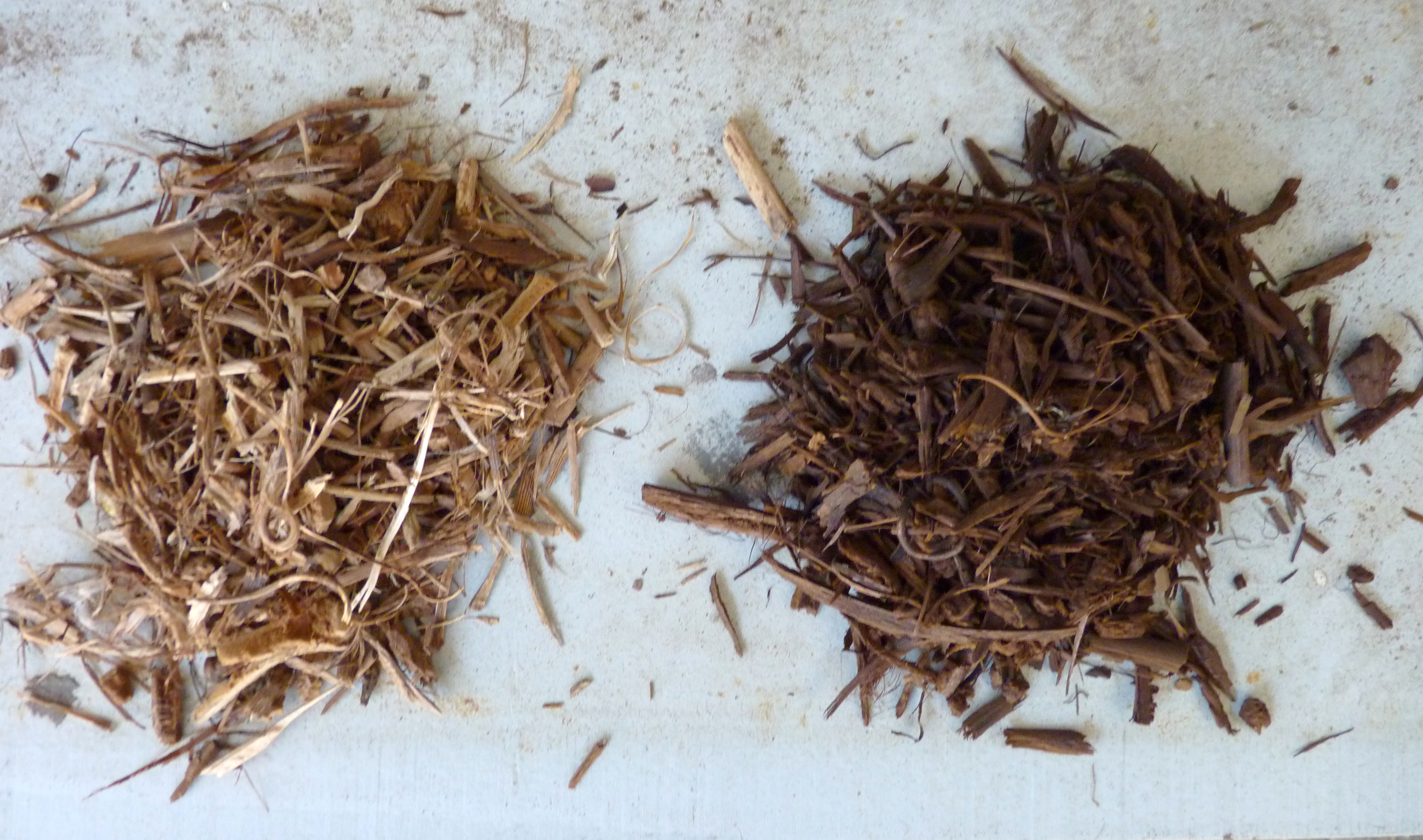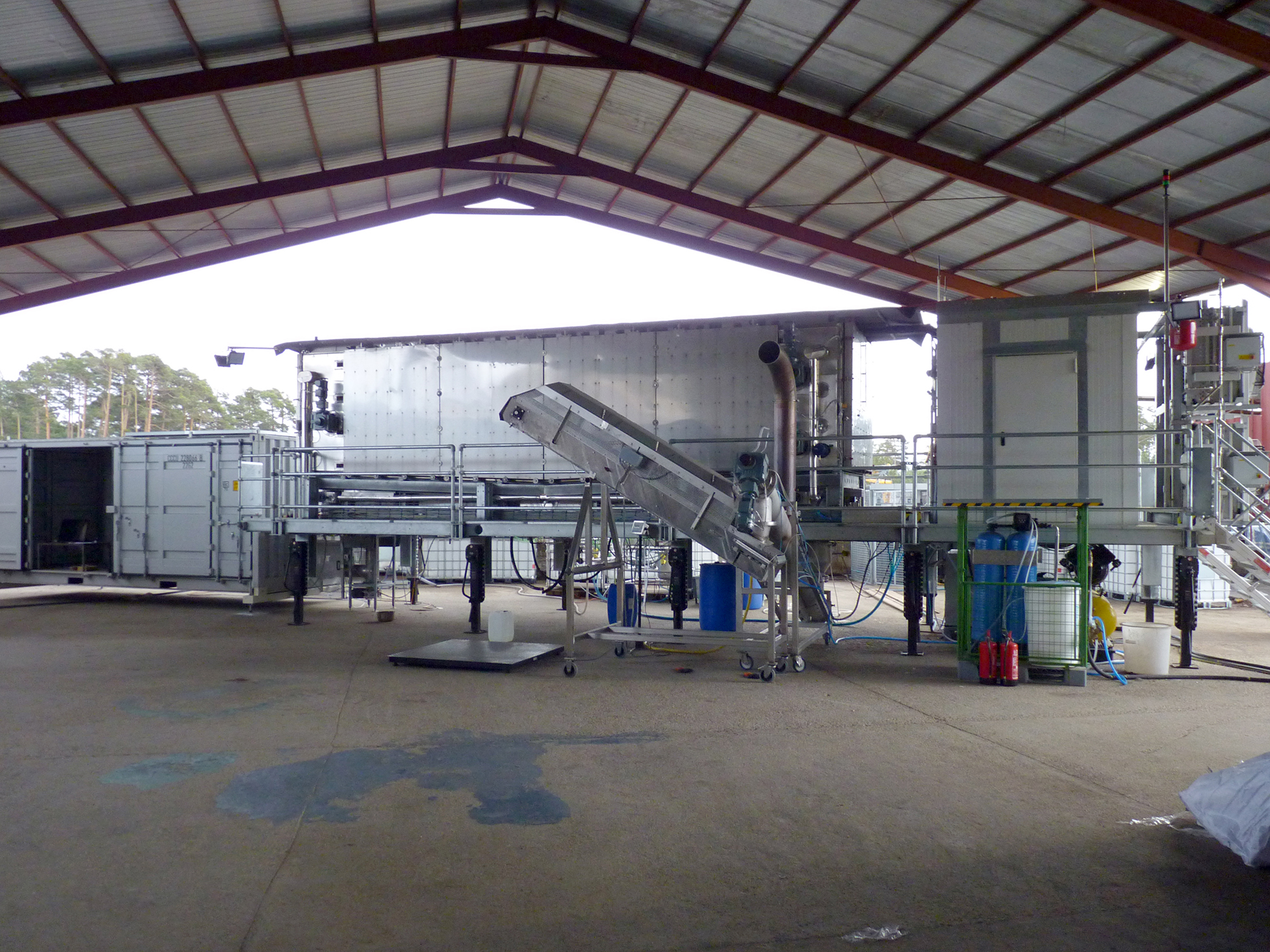ACHEMA 2018
Making efficient use of biomass
Industrial facilities are generally located far away from extensive forest regions. Because wood requires efforts to transport, it sees only limited use as a raw material in industry. In the EU-funded SteamBio project, researchers from the Fraunhofer Institute for Interfacial Engineering and Biotechnology IGB have teamed up with various partners to change all that, developing a special steam drying technique that could significantly cut transportation costs. Another bonus is that the technique yields valuable feedstock for the chemical industry. The technique is already in use at a pilot facility in Spain. From June 11-15, visitors to the ACHEMA trade fair in Frankfurt am Main will be able to see a model of the facility for themselves (Hall 9.2, Booth D66).


Using wood on an industrial scale offers a great opportunity to replace crude oil and natural gas. The challenge is coming up with innovative ways to treat biomass so as to allow for sustainable products and production processes.
Normally, forestry waste, weak wood and other inferior wood is ground into wood chips, which are an important feedstock for the wood processing industry. They are also used as fuel in thermal power plants and woodchip heating systems. However, the high moisture content of fresh wood chips presents two problems: it is a lot of weight to transport, and it is difficult to store the damp cargo. If it is not protected from rain, the material quickly rots.
Making wood chips suitable for transportation
As part of the EU-funded SteamBio project, researchers from the Fraunhofer Institute for Interfacial Engineering and Biotechnology IGB, together with ten other project partners from four European countries, developed a new technique to adapt wood chips for transportation and storage. “Instead of transporting the biomass as wood chips,” explains Siegfried Egner, department head at Fraunhofer IGB and coordinator of the SteamBio project, “we torrefy it: we heat the biomass in a steam atmosphere without oxygen. The biomass has three main components – cellulose, lignin and hemicellulose – and this process eliminates the hemicellulose completely.” This significantly reduces the weight of the material, improves its specific calorific value and allows us to grind easily the material into a highly reactive powder.
The torrefied biomass is water repellent and has significantly improved combustion properties, since it is composed purely of hydrogen and carbon. It can be transported in open bulk containers, since rain beads off the surface without penetrating the interior. What is more, the torrefied biomass is significantly lighter than the untreated material, which significantly reduces transportation costs.
Replacing coal with biomass
The torrefied wood chips can easily be crushed between two fingers. They can either be compressed into pellets or ground into powder. Since it has a greater surface area, the biomass powder possesses greater reactivity in material uses than larger chunks. In energy applications, it can also be mixed with coal dust and fed into the firing system of coal-fired power plants. It is even possible to replace the coal entirely with biomass while keeping the same combustion system.
Producing chemicals sustainably
The volatile substances produced in the torrefaction process are valuable. They can be processed to obtain chemicals that serve as feedstock for a wide range of industry products. Until now, these platform chemicals have been obtained from crude oil or natural gas; now, torrefaction offers a sustainable way to produce them. “In the case of many biomass materials, the platform chemicals generate so much profit that they finance the entire torrefaction process,” says Dr. Antoine Dalibard, group manager at Fraunhofer IGB.
Steam drying at over 200 degrees
But what exactly happens during the heat treatment process? “Torrefaction in itself is not a new technique,” explains Bruno Scherer, project engineer at Fraunhofer IGB. “In the SteamBio project, we use the steam drying technology that was developed at the IGB and that we adapted for this process to work at temperatures between 200 and 250 degrees Celsius.” What is special about the technique is that the moisture contained in the biomass and the vaporous products of torrefaction are systematically retained in the process chamber and themselves become the process medium. “In other words, we work with superheated steam,” says Scherer.
The high temperatures dry out the biomass and result in organic compounds with low boiling points becoming volatile. While cellulose and lignin remain in a solid state, the volatile substances pass into the gas phase. Researchers use special condensers to capture these gaseous substances and selectively cool them, thus recovering them as liquids.
A pilot facility has been built up, installed and operated at project partner Heckmann Metall- und Maschinenbau GmbH, where it runs 24 hours a day, 7 days a week. Beech wood is used as the biomass. The facility has been then moved to Spain in January 2018 to continue the operation. Here, project partners torrefy pine, oak and beech wood, as well as vineyard prunings and waste from olive oil production. Researchers from Fraunhofer IGB will be at the ACHEMA 2018 trade fair in Frankfurt am Main to showcase a model pilot facility as well as dried and torrefied samples; find them at the joint Fraunhofer booth in Hall 9.2, Booth D66.
 Fraunhofer Institute for Interfacial Engineering and Biotechnology IGB
Fraunhofer Institute for Interfacial Engineering and Biotechnology IGB